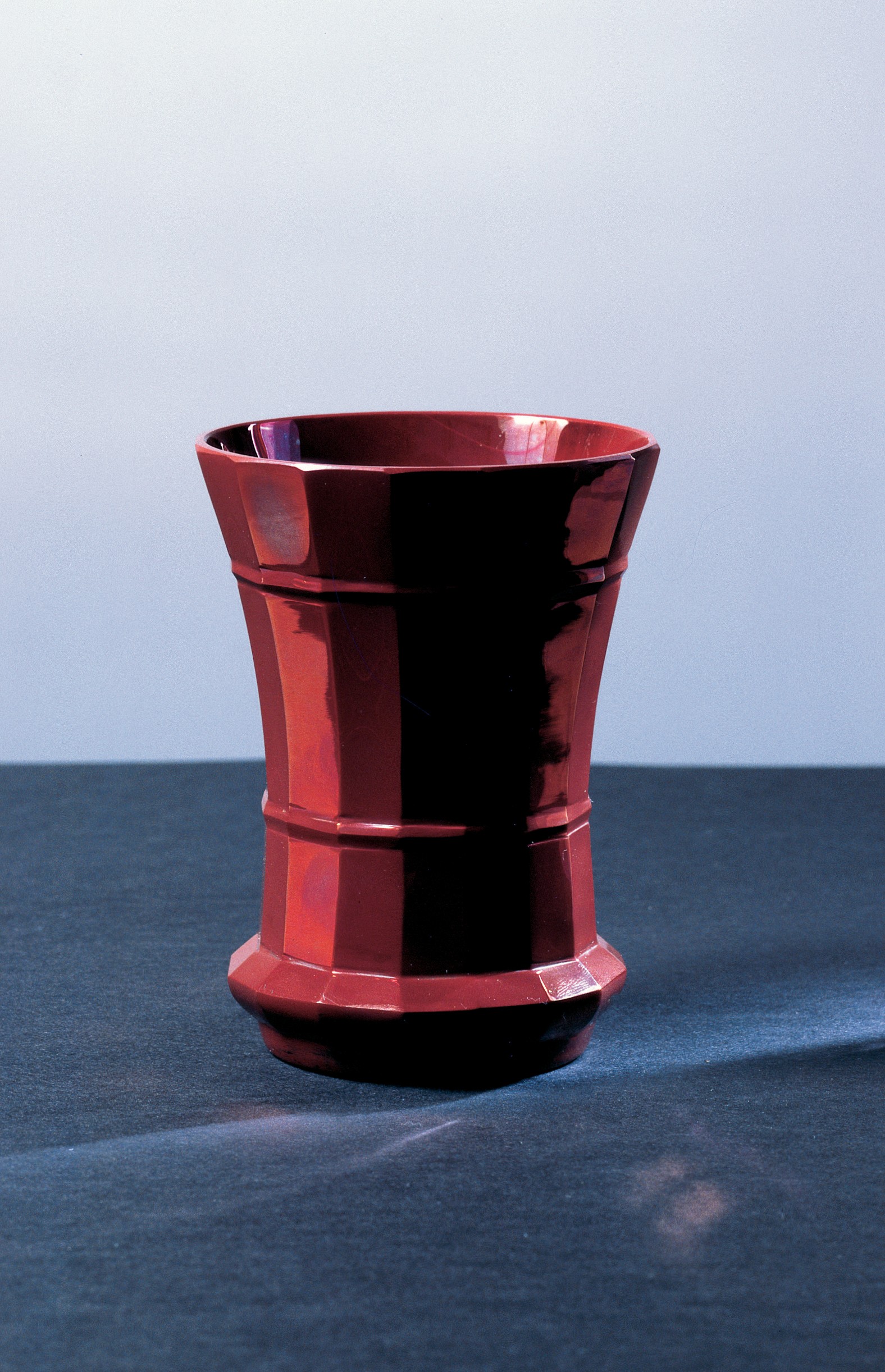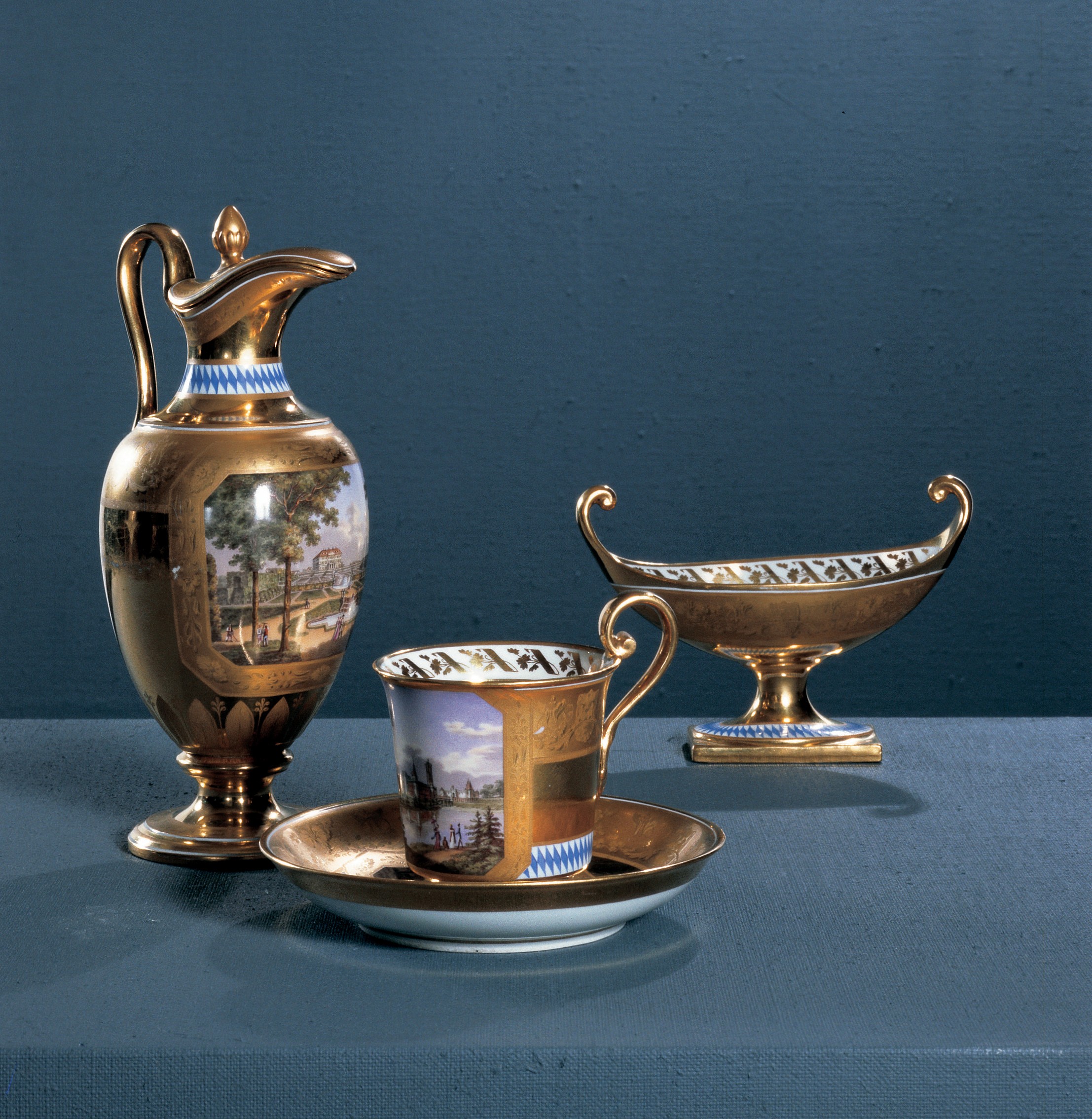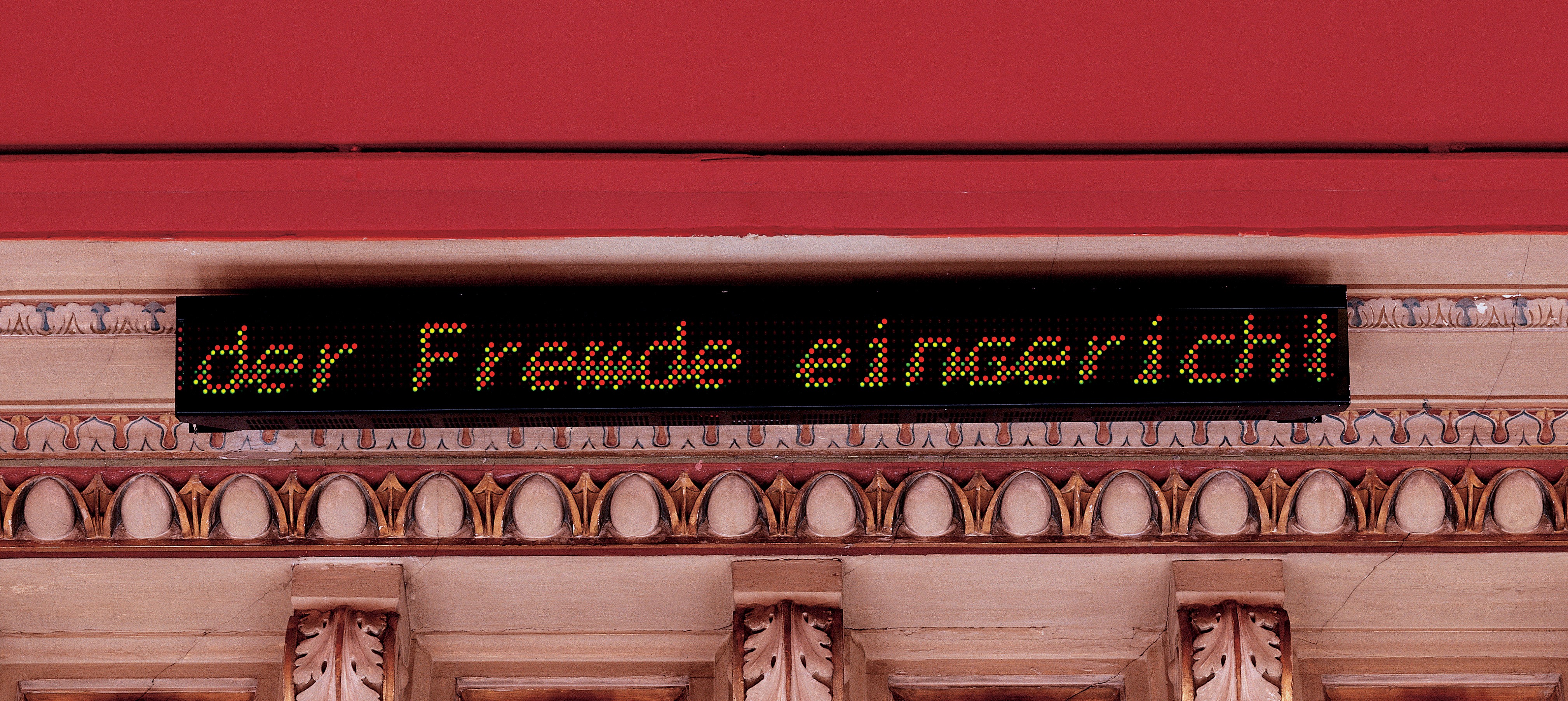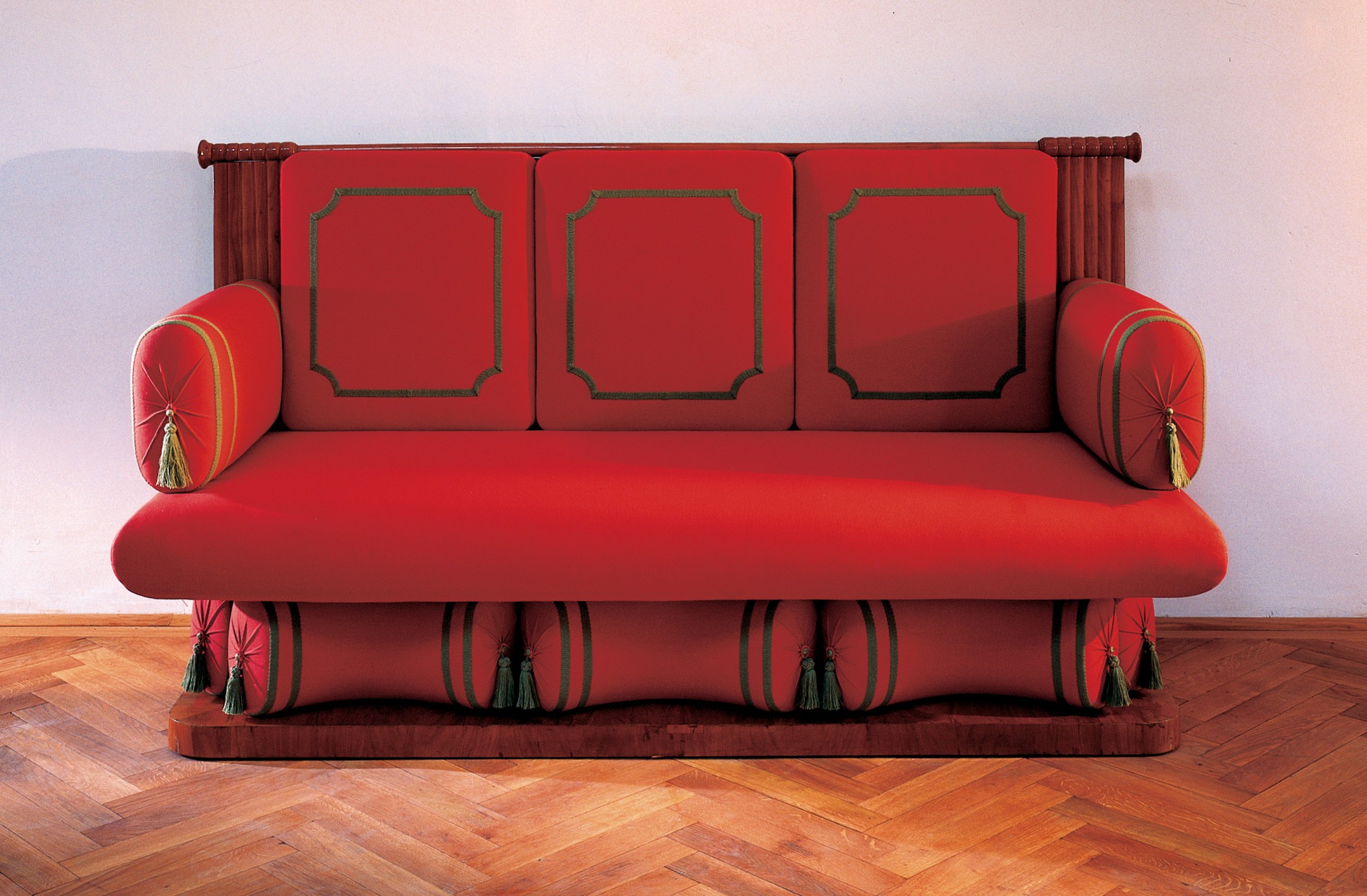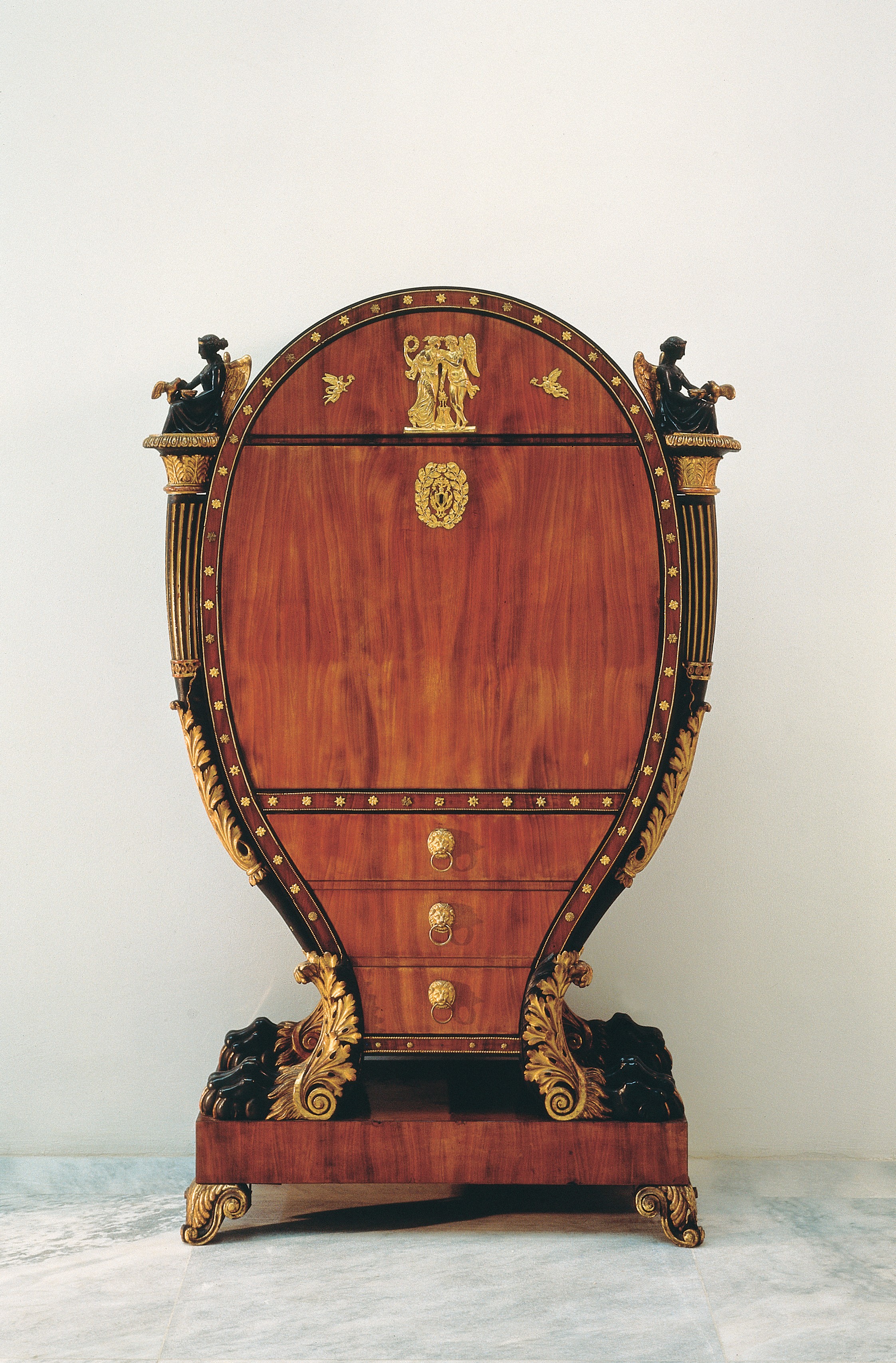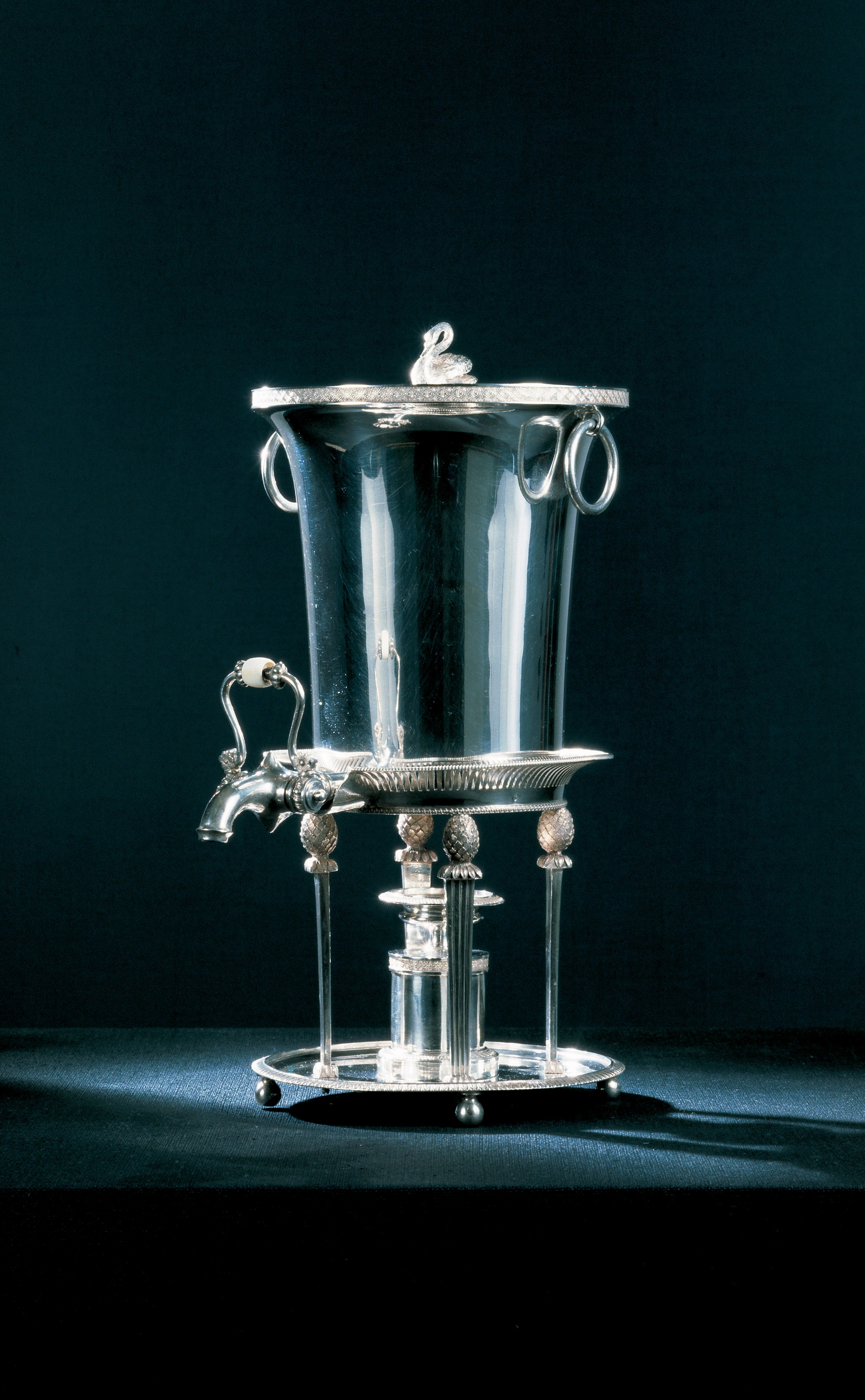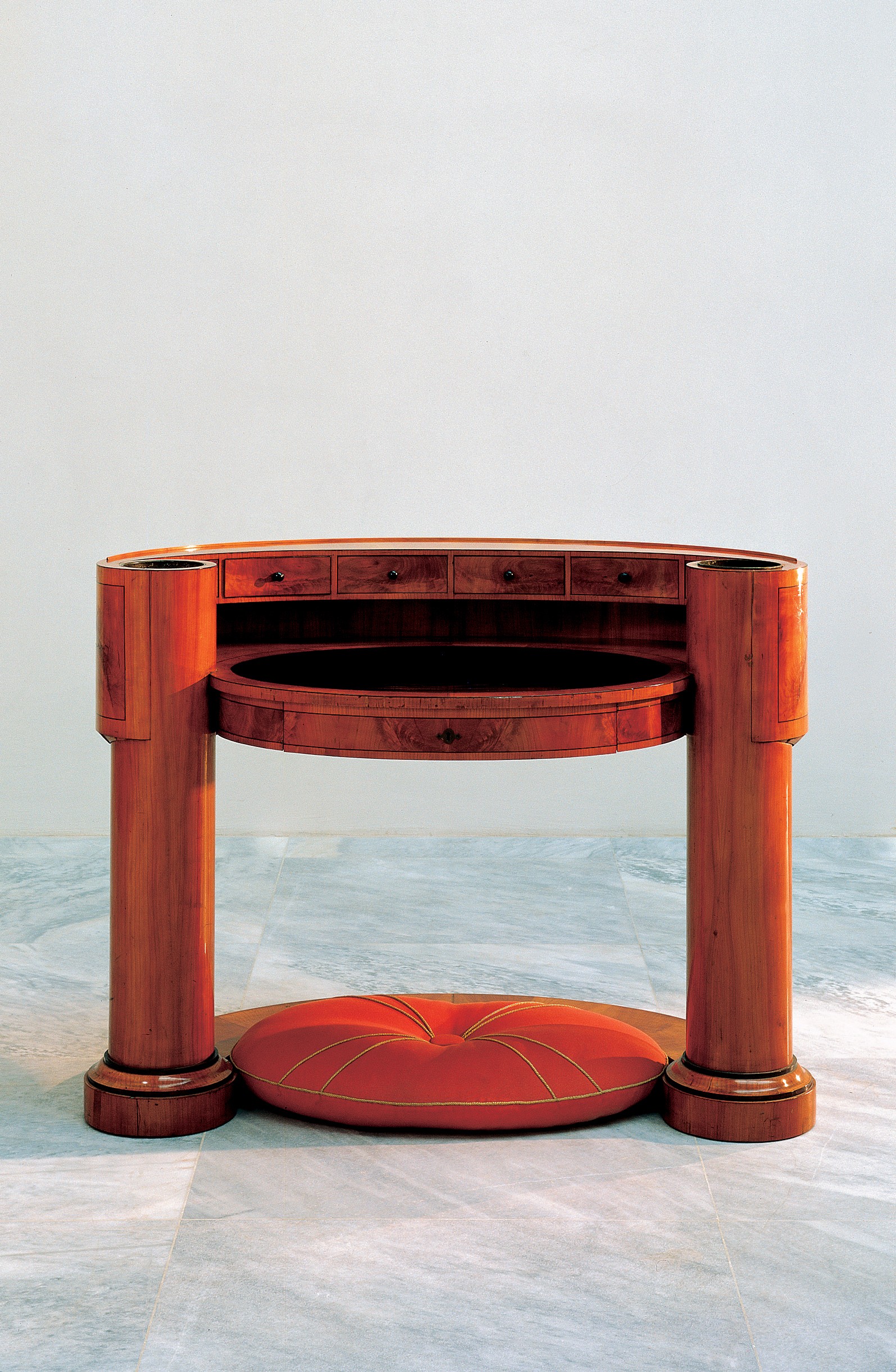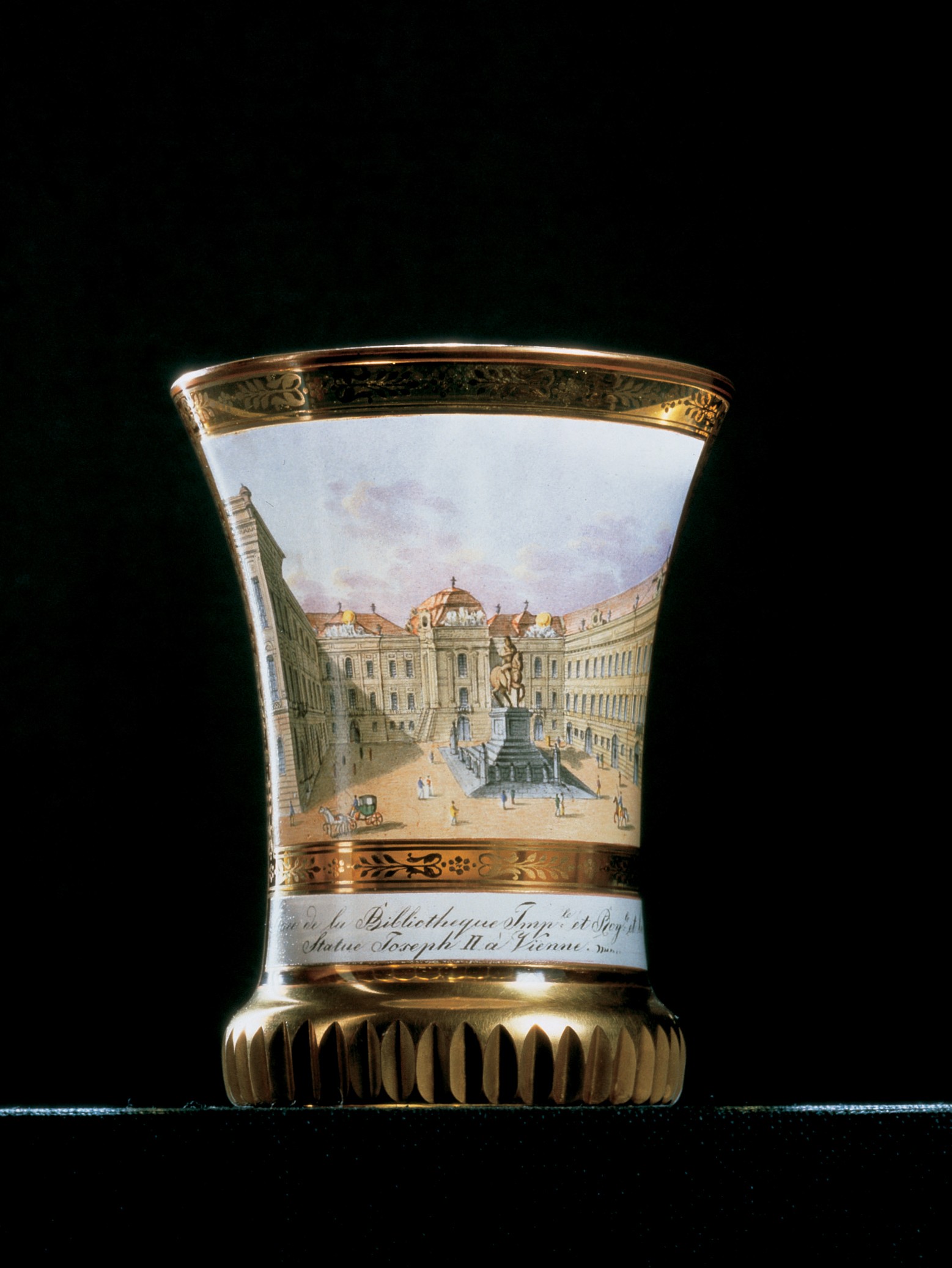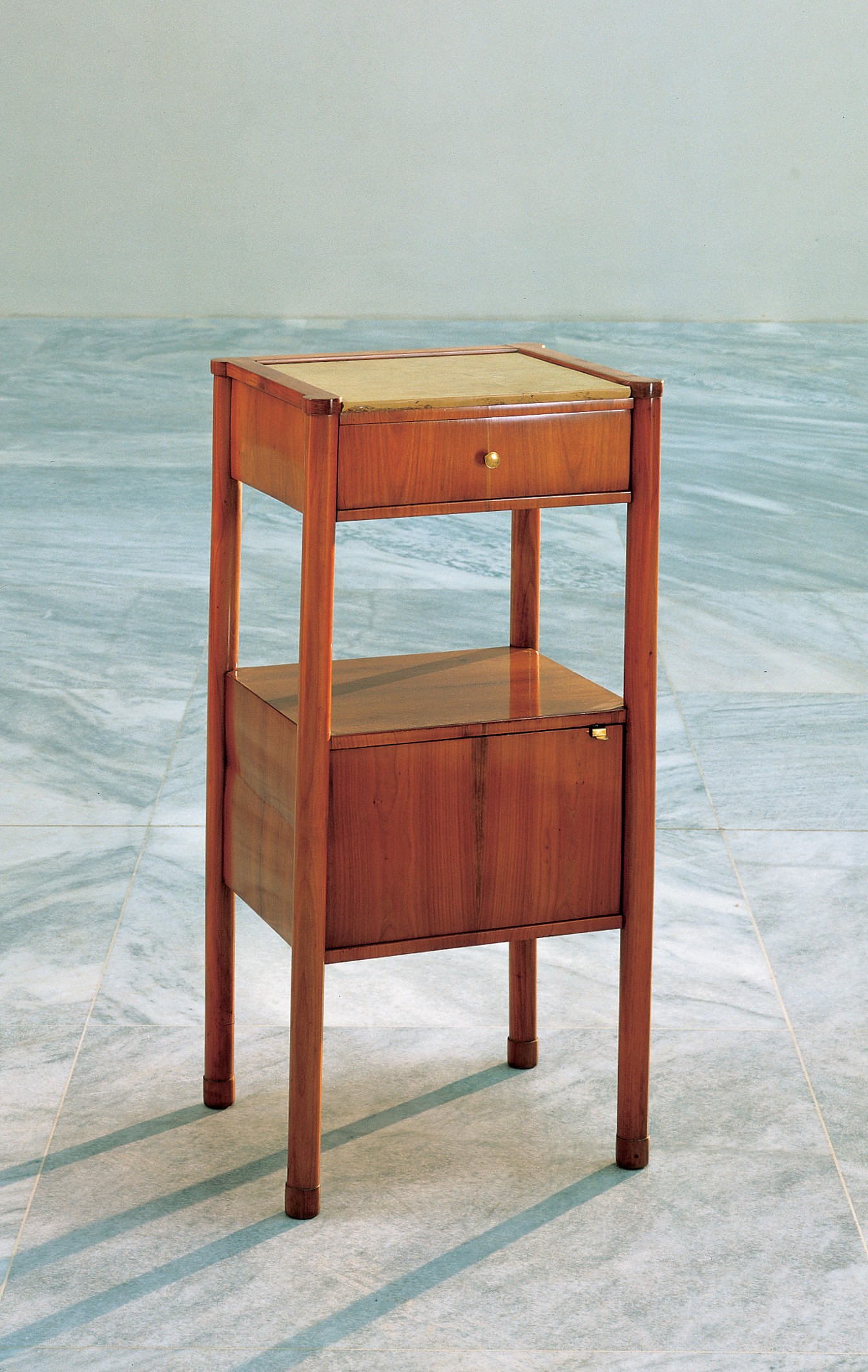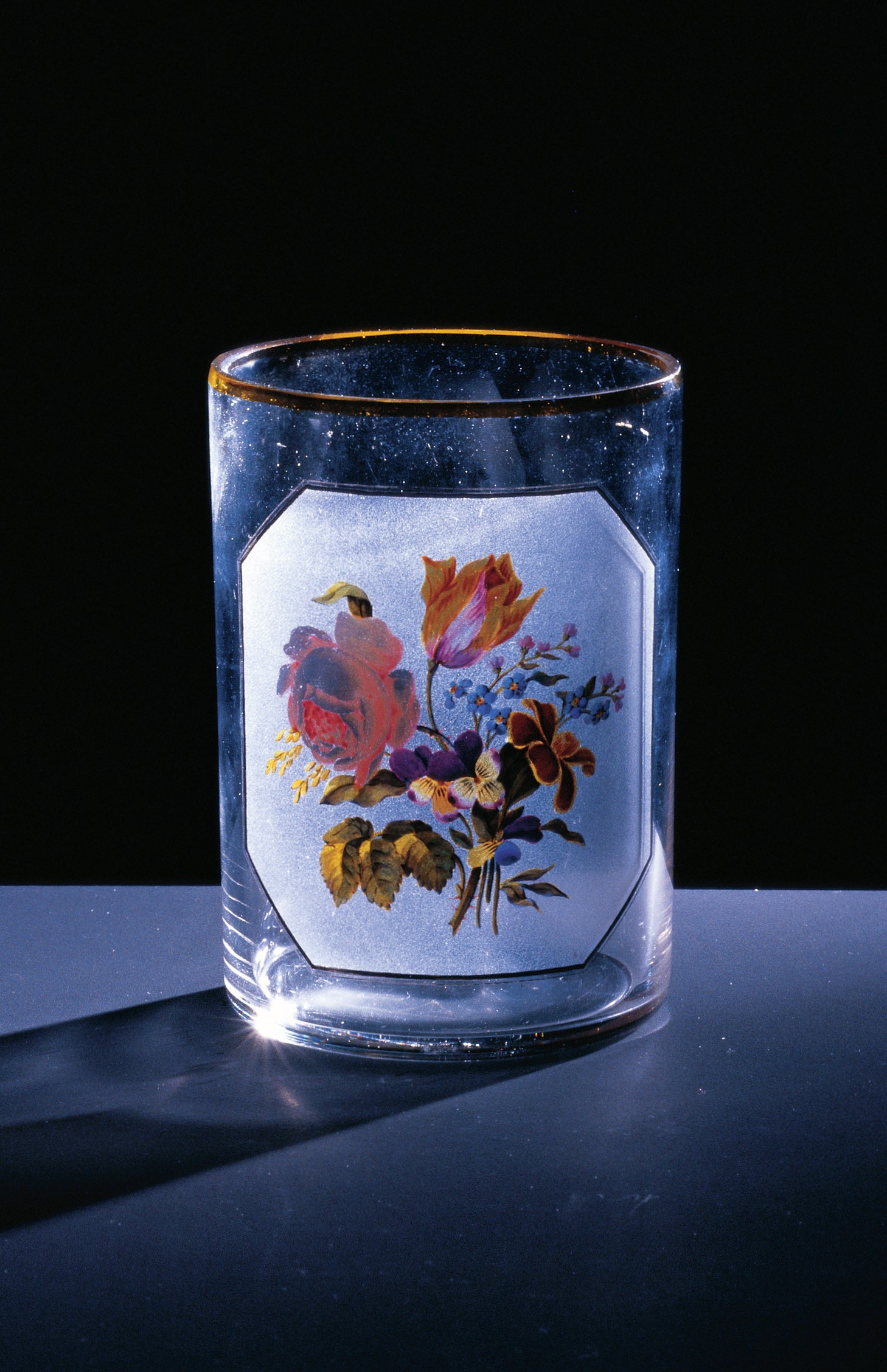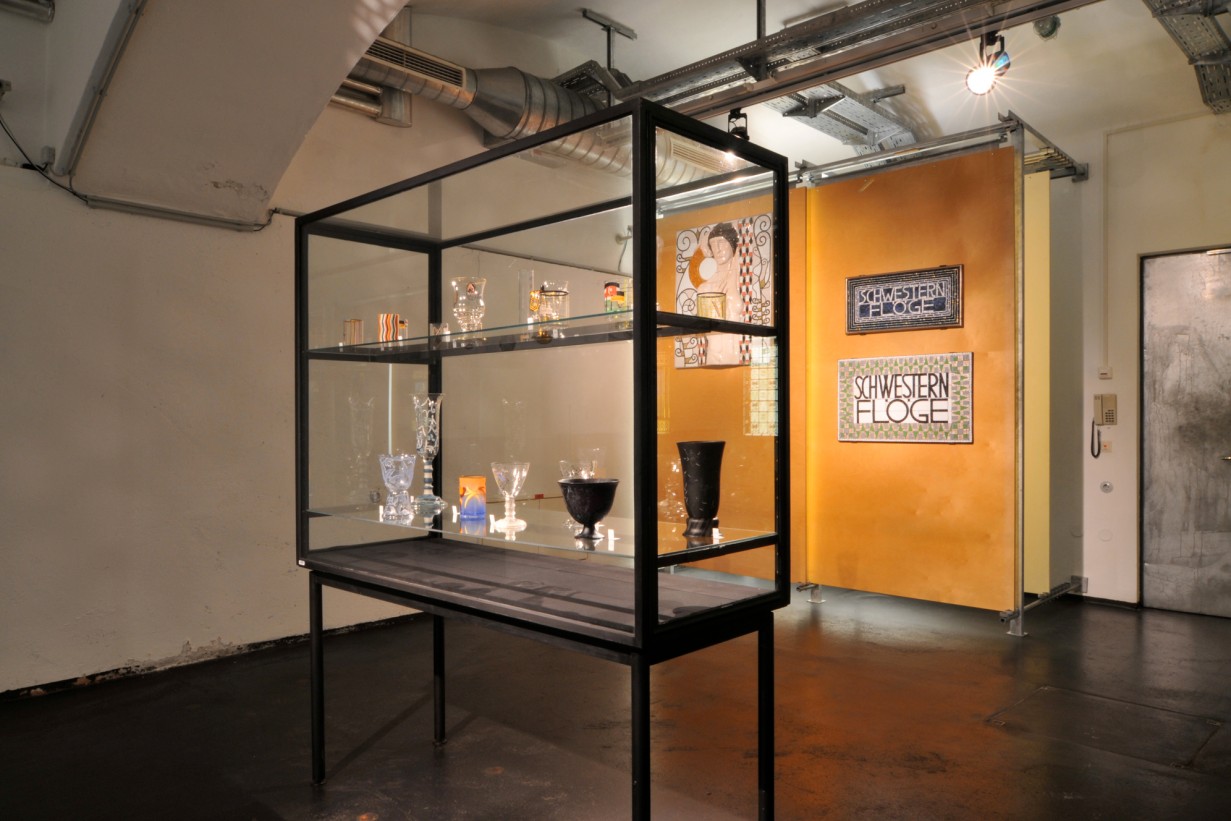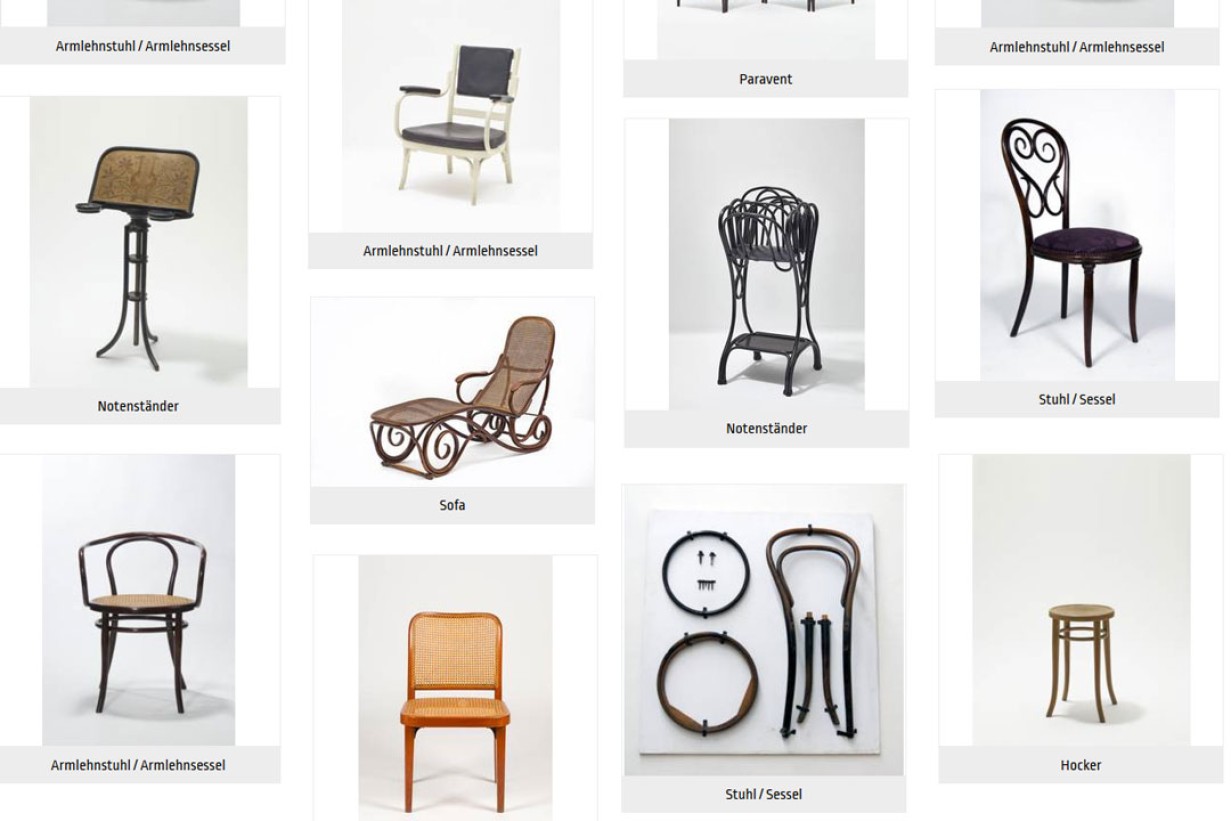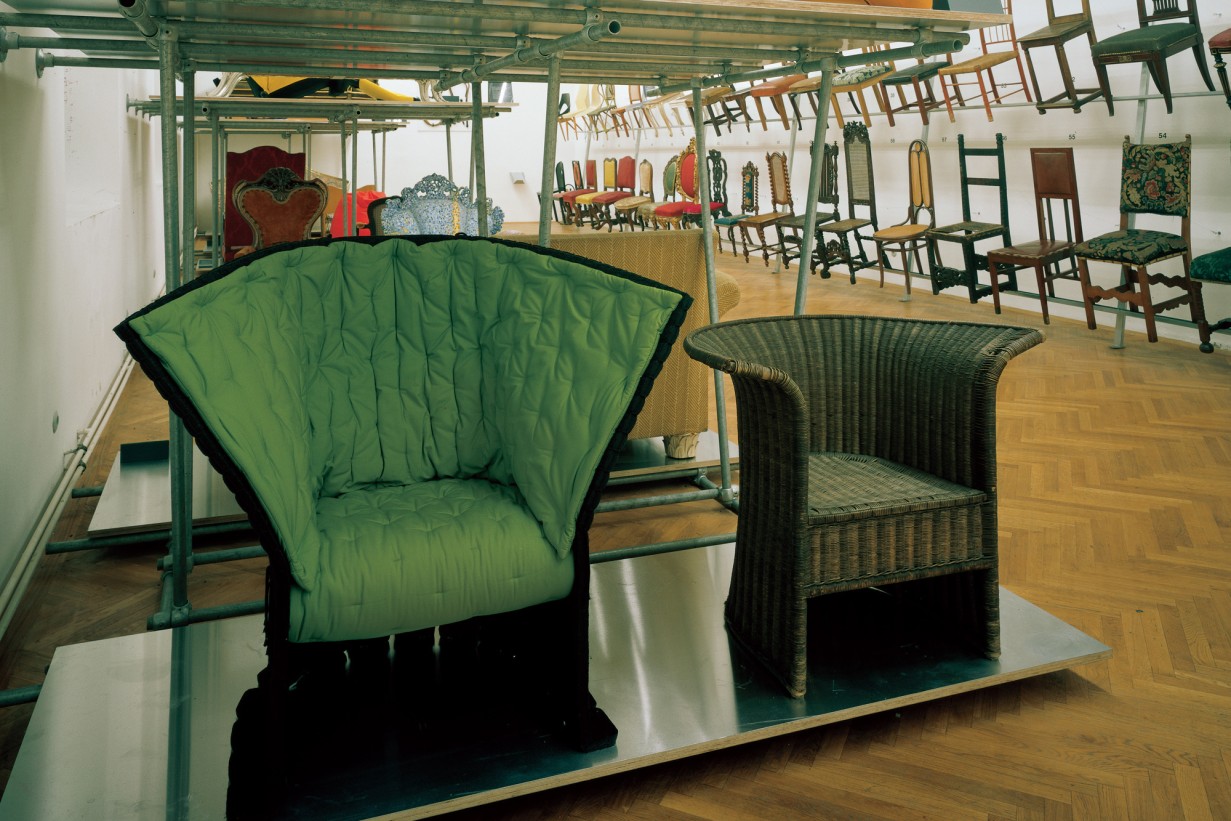
Permanent Collection Empire Style Biedermeier
Artistic intervention: Jenny Holzer
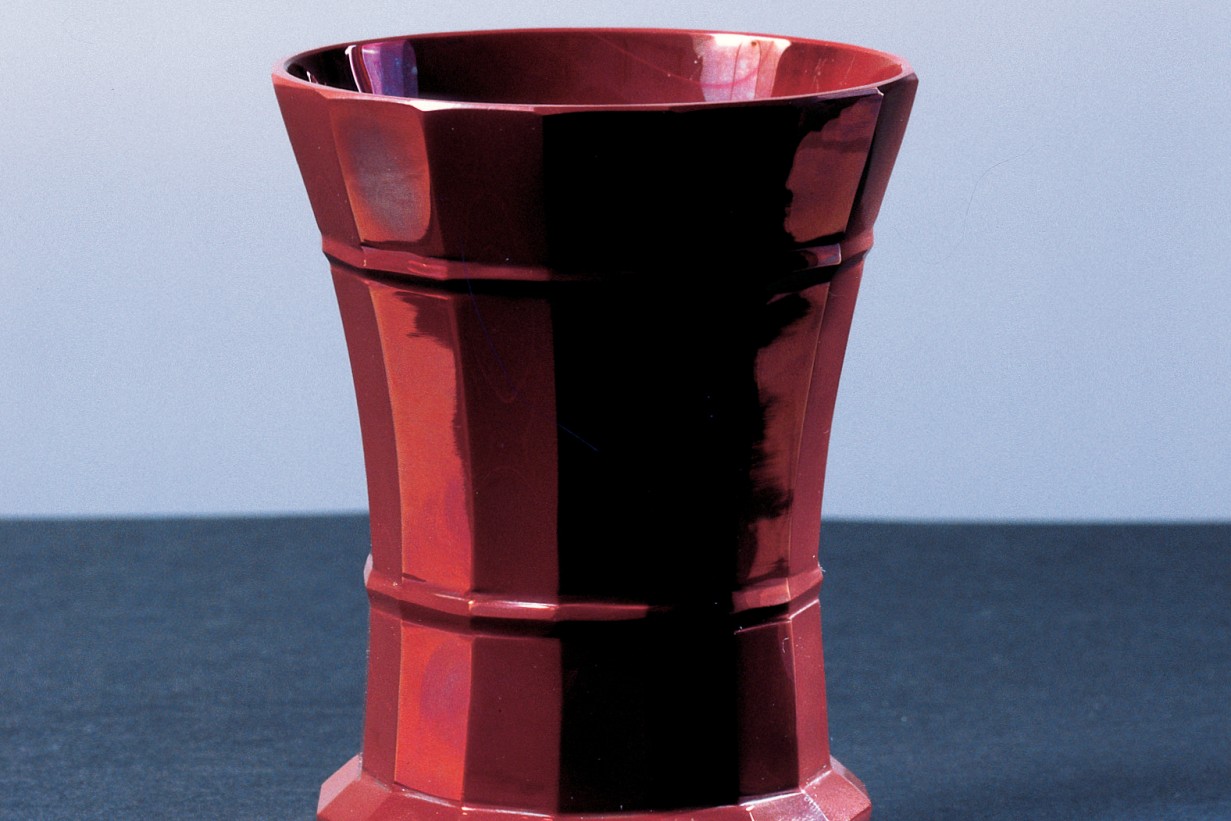
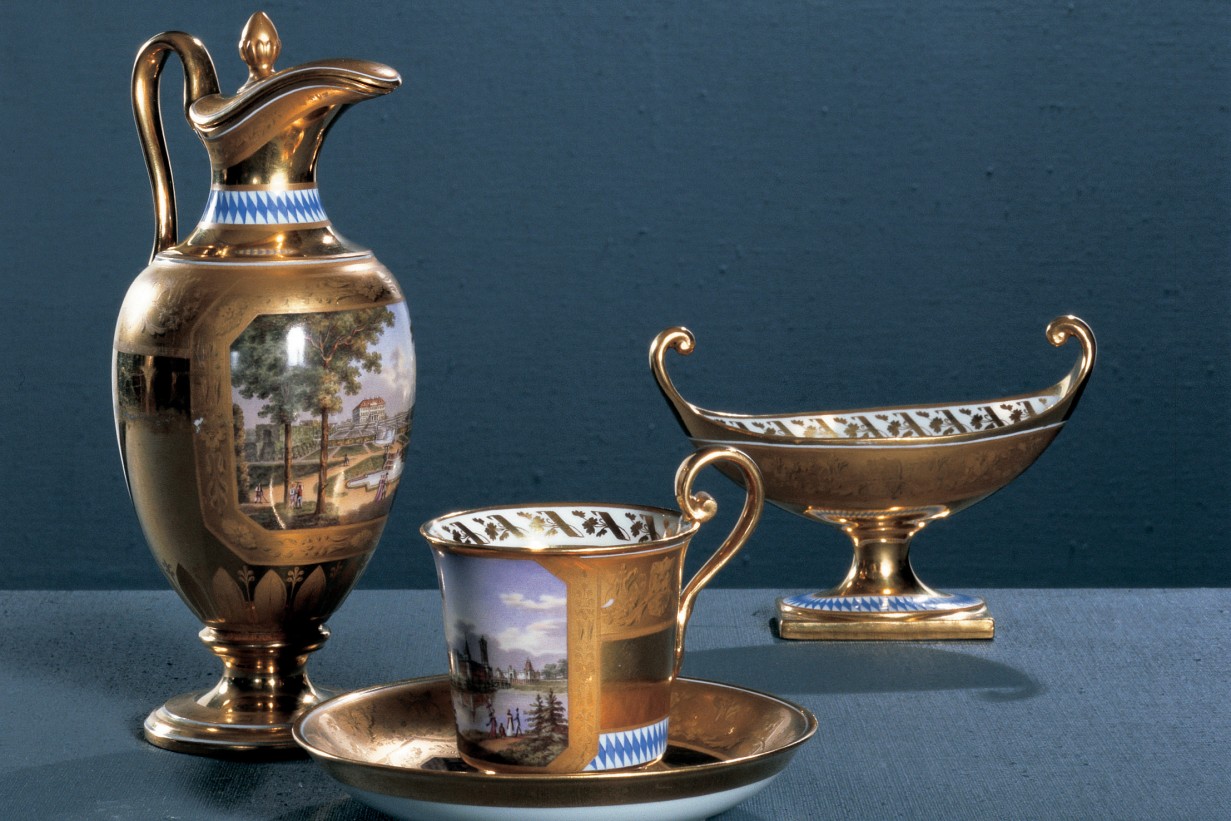
© MAK
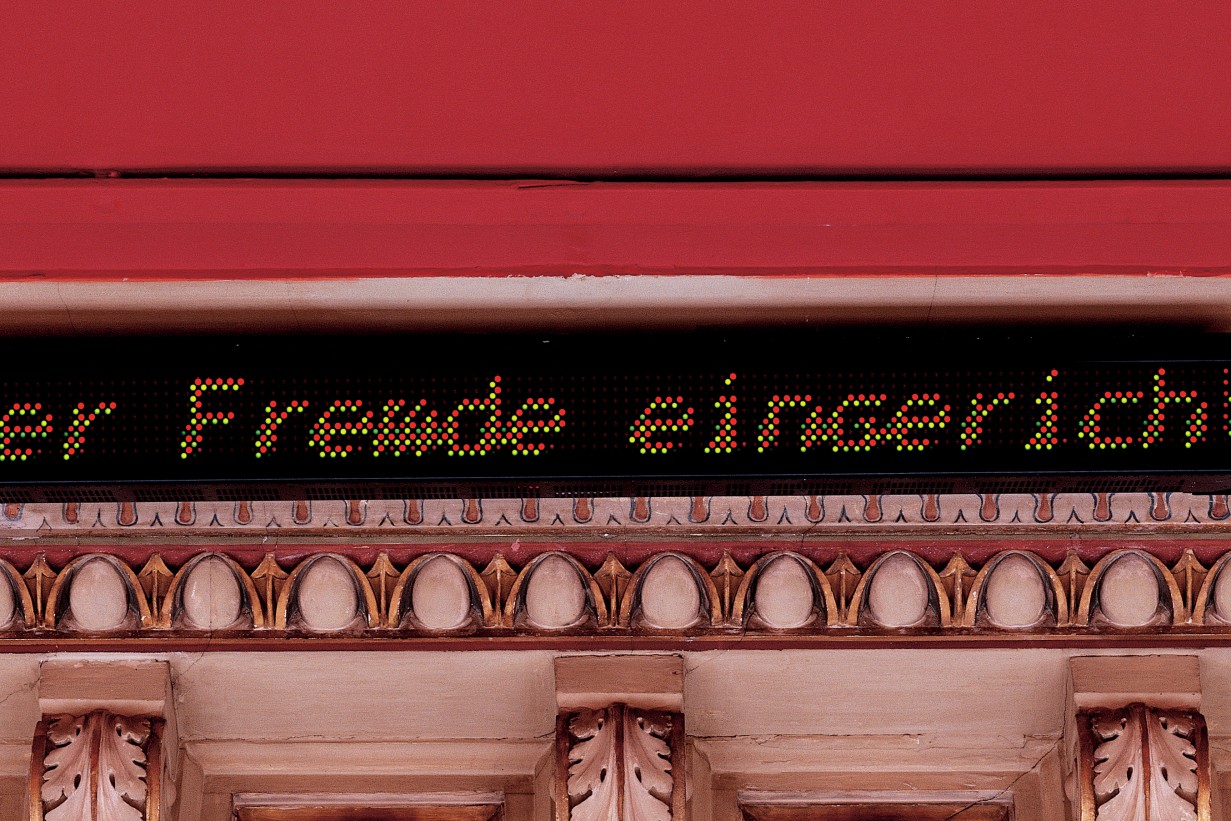
© MAK
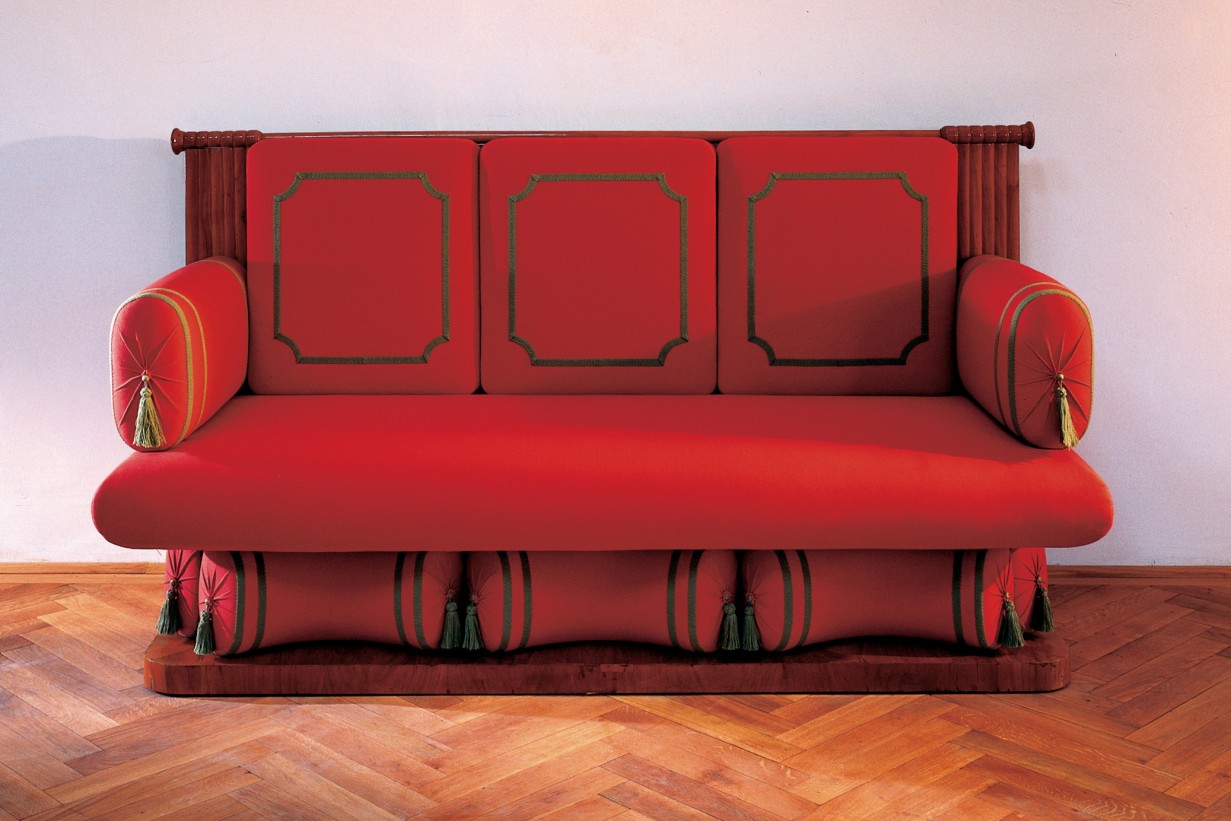
© MAK
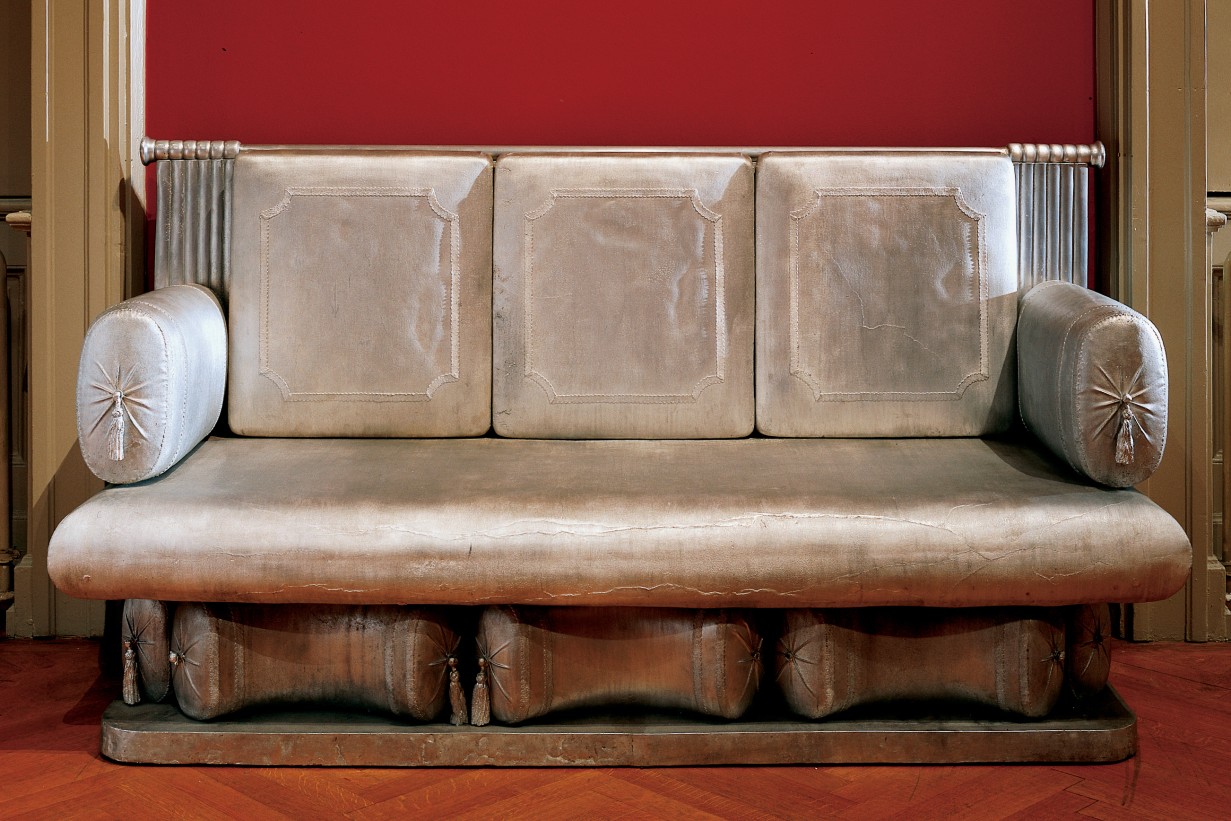
© MAK
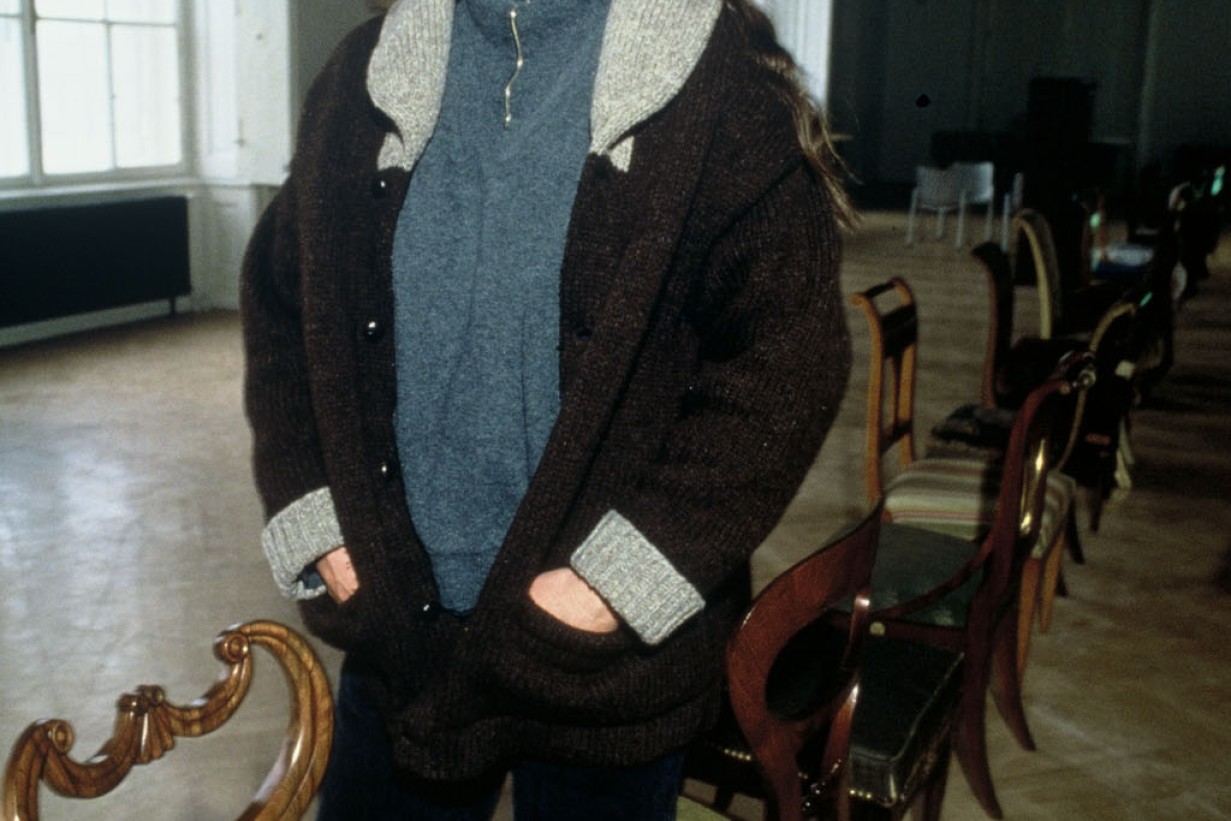
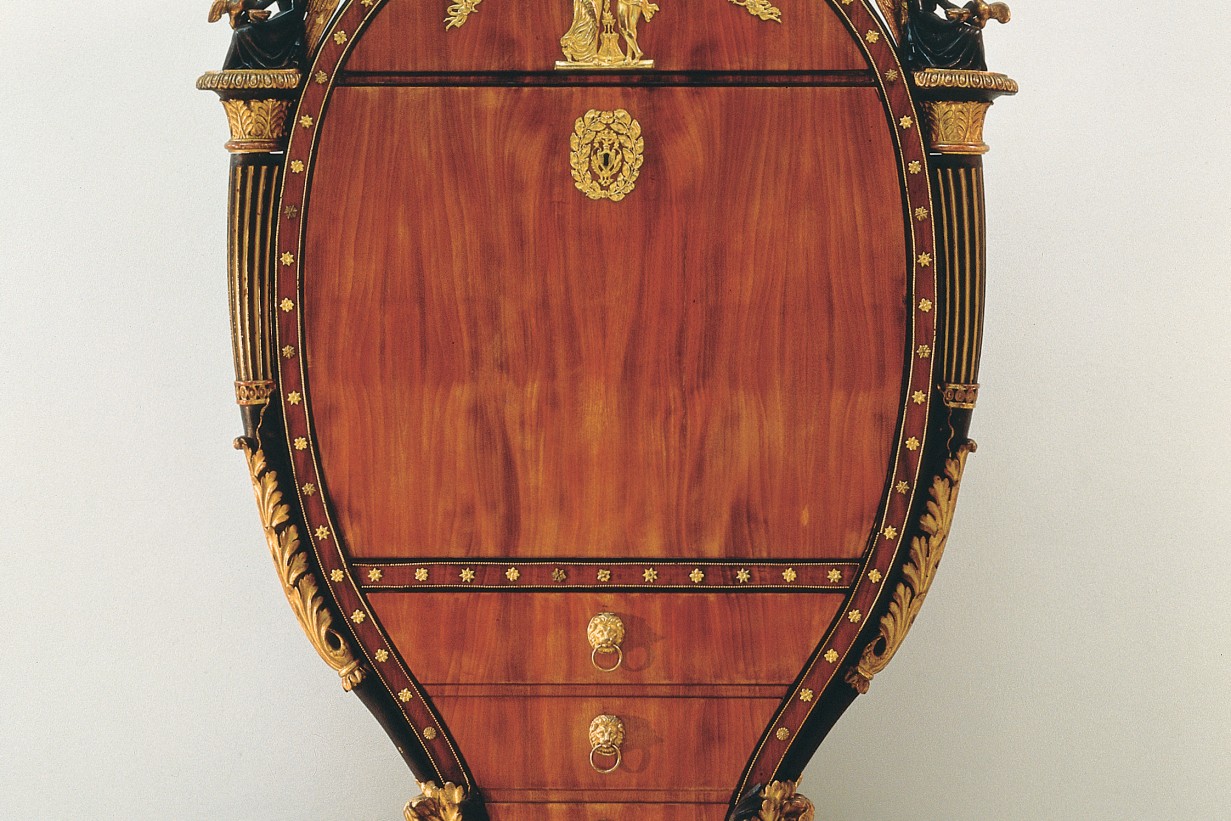
© MAK
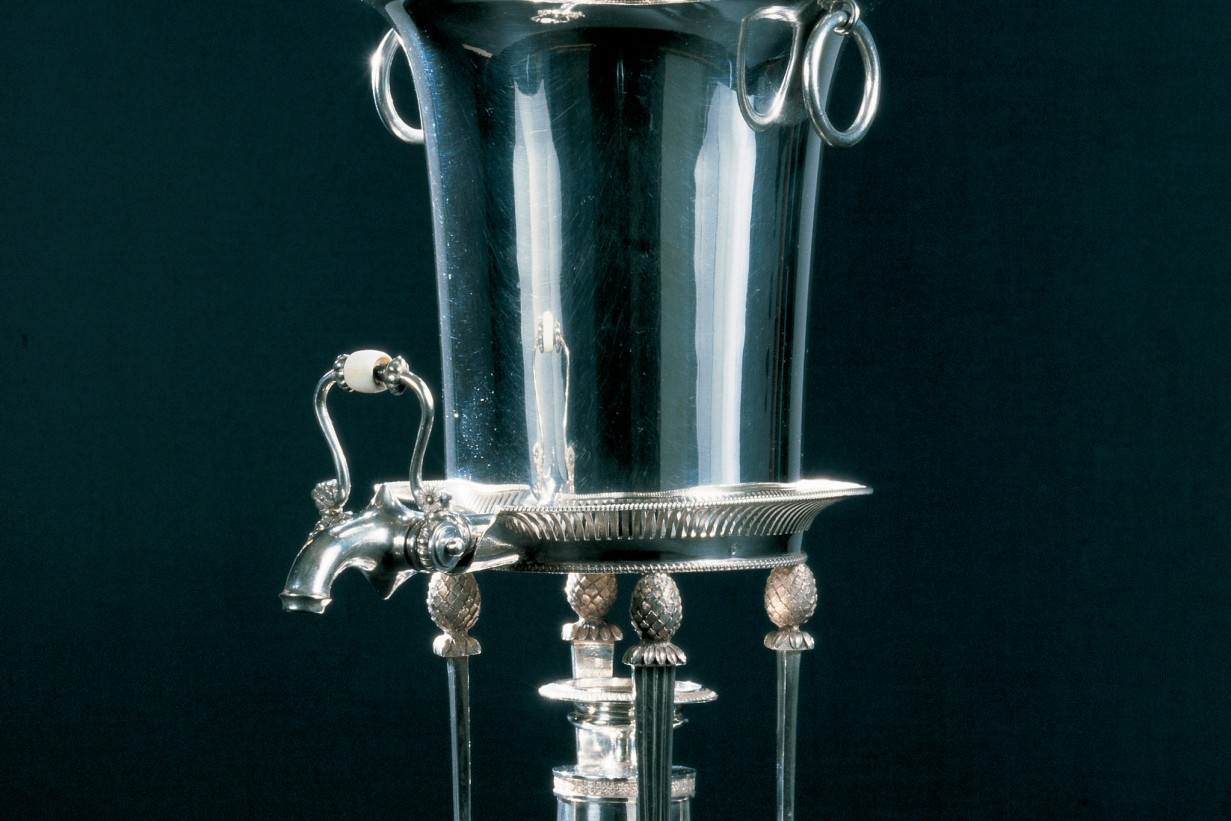
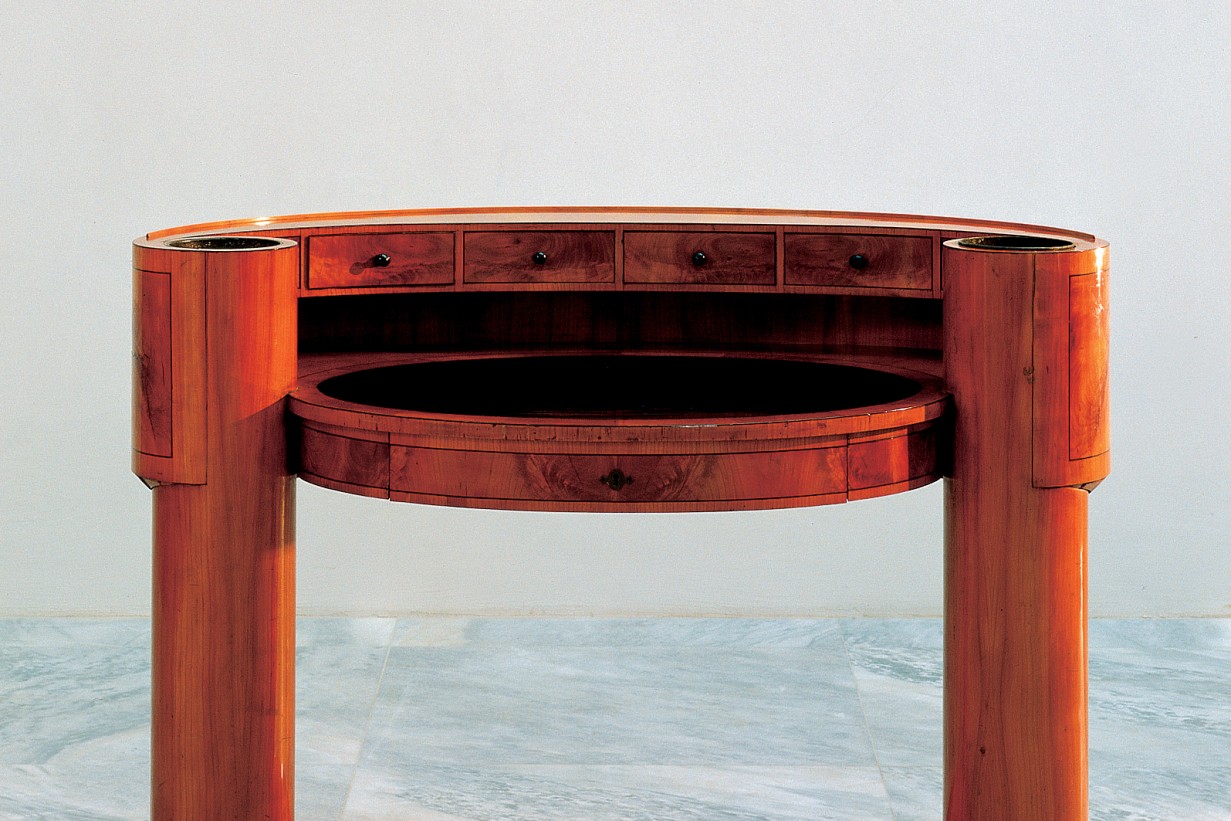
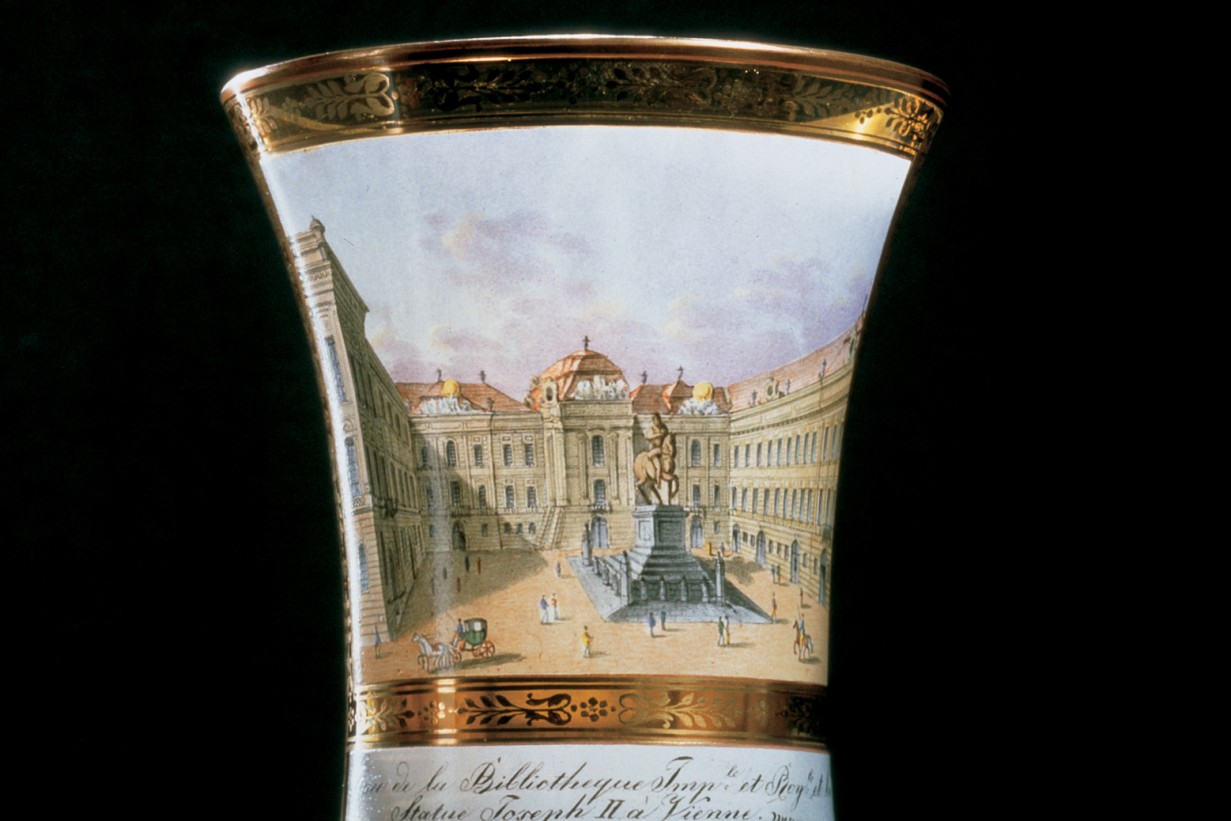
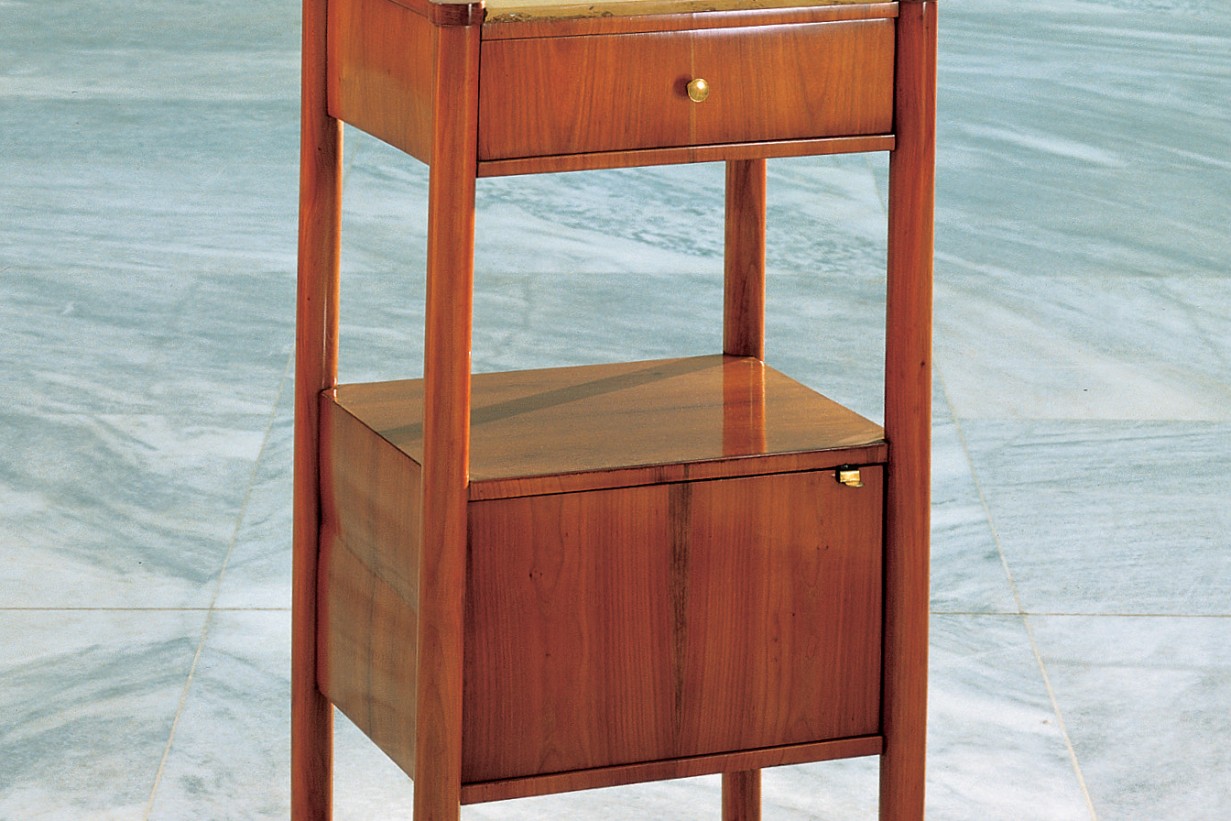
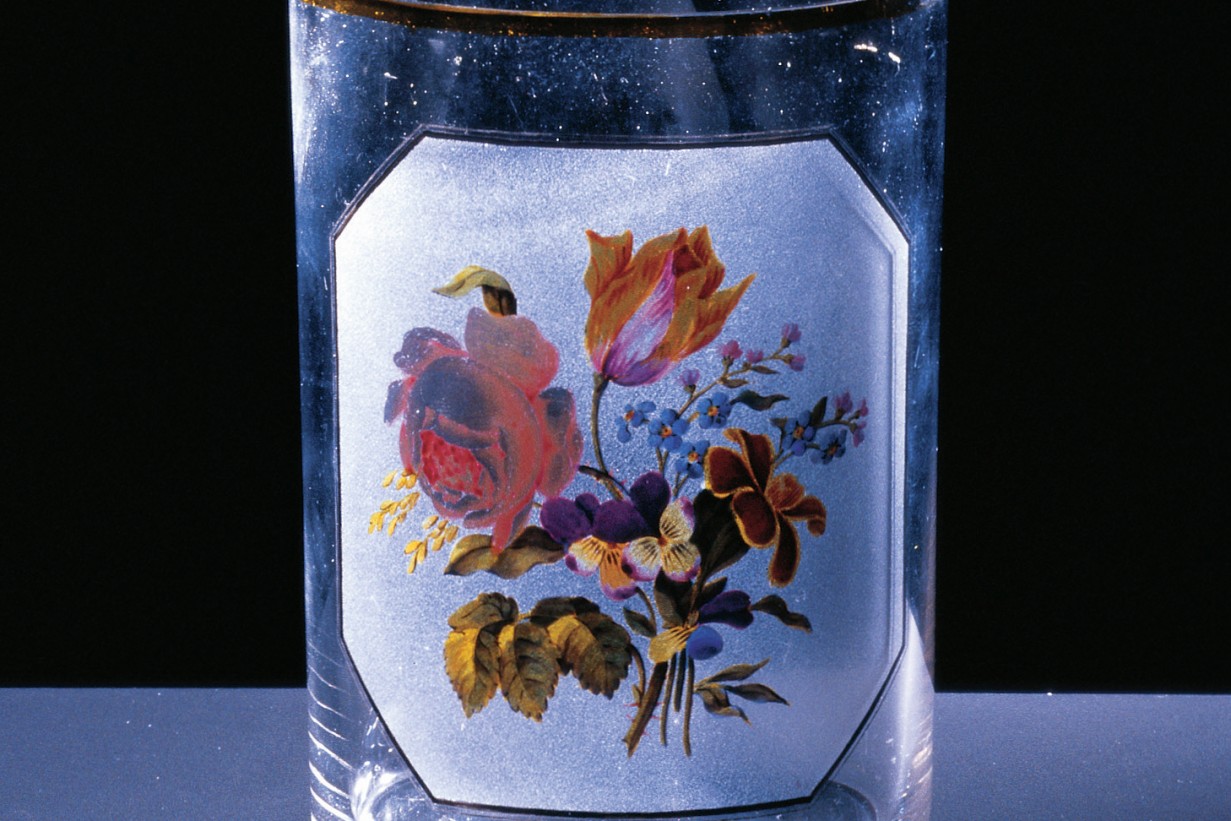
Previous Image
I have never liked museum labels and brochures. I wanted to find another system to present information about the collection and about the times in which the objects were made. I tried to think of an appealing way to show a super-abundance of text on Biedermeier and Empire. I chose electronic signs with large memories to talk about why what was produced for whom. The signs display the predictable facts, and softer material such as personal letters of the period. Because some people hate to read in museums, I placed the signs near the ceiling so they can be ignored. To encourage people who might read, I varied the signs' programs and included special effects. For serious, exhausted readers, I provided an aluminum mock-Biedermeier sofa on which to sit. I also rearranged the furniture, silverware, glassware, and porcelain, as would any good housewife. / Jenny Holzer
A heterogeneous mass of consumers arose during the first half of the nineteenth century, something never previously seen in Austrian cultural history. With the effects of the Industrial Revolution and the growing cultural, social, and economic strength of the middle class, it became both possible and necessary to produce differentiated products for these consumers. It now became both necessary and possible to put at the disposal of the more general public items that had previously only been available to a small circle of consumers. Besides the wide variety of tastes, the range of products on offer was therefore also marked by a subtle gradation from expensive luxury items to cheap substitutes. A generally understood language for materials and forms thus emerged, which was no longer specific to any particular social stratum, but instead determined by financial factors. The depictions were no longer symbolic in character, but were related to real people, things, and events.
The selection of objects displayed here therefore shows, alongside outstanding achievements of Austrian art and craft production, above all the variety of designs and materials used for everyday commodities during the Empire and Biedermeier period. The explosion of richly varying forms is demonstrated by a series of variations in chairs, porcelain cups with a limitless range of moods, glasses conveying all sorts of information, and silverware pieces with designs ranging in character from abstract to decorative. / Christian Witt-Dörring (curator of the MAK Furniture and Woodwork Collection during the phase of the reinstallation of the MAK Permanent Collection in the early 1990s)
A heterogeneous mass of consumers arose during the first half of the nineteenth century, something never previously seen in Austrian cultural history. With the effects of the Industrial Revolution and the growing cultural, social, and economic strength of the middle class, it became both possible and necessary to produce differentiated products for these consumers. It now became both necessary and possible to put at the disposal of the more general public items that had previously only been available to a small circle of consumers. Besides the wide variety of tastes, the range of products on offer was therefore also marked by a subtle gradation from expensive luxury items to cheap substitutes. A generally understood language for materials and forms thus emerged, which was no longer specific to any particular social stratum, but instead determined by financial factors. The depictions were no longer symbolic in character, but were related to real people, things, and events.
The selection of objects displayed here therefore shows, alongside outstanding achievements of Austrian art and craft production, above all the variety of designs and materials used for everyday commodities during the Empire and Biedermeier period. The explosion of richly varying forms is demonstrated by a series of variations in chairs, porcelain cups with a limitless range of moods, glasses conveying all sorts of information, and silverware pieces with designs ranging in character from abstract to decorative. / Christian Witt-Dörring (curator of the MAK Furniture and Woodwork Collection during the phase of the reinstallation of the MAK Permanent Collection in the early 1990s)
Media
Sofa, Model No. 57, Vienna, ca. 1825/30, Design and manufacture: Danhauser Furniture Factory H 2726 / 1983 © MAK
Jenny Holzer, Sofa for visitors, 1993, Object after an original by Josef Danhauser, GK 99 / 1993 © MAK
